Thirty years of death of Tan Qiyi: The person who explored between time and space | "The back of the master"
Author:Jiefang Daily Time:2022.08.26
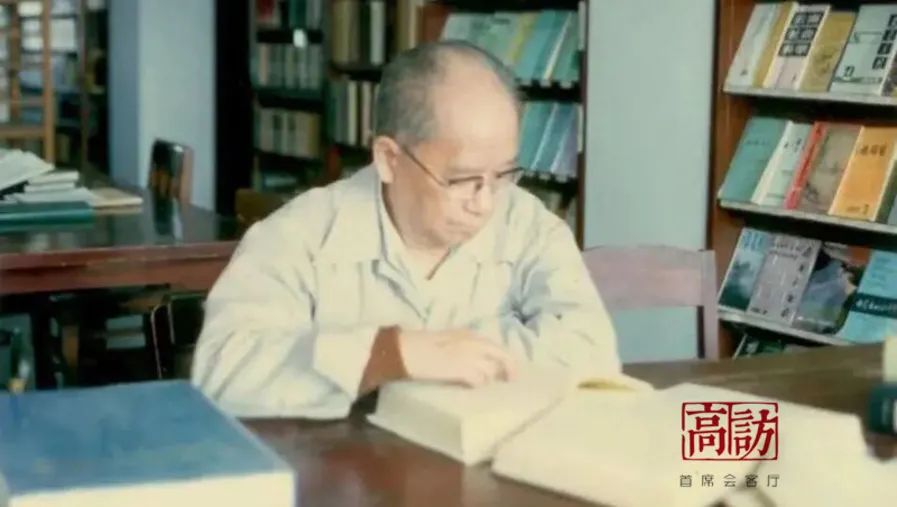
One day in the early spring of 1992, when Ge Jianxiong dealt with his teacher Tan Qizheng's letter, he saw a letter sending a Biography Institute from the American Biography Institute to inform Tan Qizhen into the "500 leaders with great influence".
At this time, Tan Qiyi was lying in a single ward on the third floor of Shanghai East China Hospital. After half a year ago, after Tan Qizheng and Ge Jianxiong finished the phone, a person ate lunch at home, and suddenly dumped from the seat to the right, and he was unconscious.
Ge Jianxiong put the United States in front of the teacher and told him the news loudly. Tan Qizheng was holding Ge Jianxiong's hand as tight as usual, and his voice made a sound that no one could understand. Has he understood whether this was unable to judge by Ge Jianxiong. Half a year later, on August 28, Tan Qiyi died, and he had never said a word during the period.
Although in the academic world, Tan Qizhen was recognized as the main founder of the Discipline of Chinese History and Geography. But his life is low -key, and he is not known to more outsiders.
The person who painted the map of half a lifetime was famous after his death. One of the major reasons is that the "Chinese History Atlas" he presided over and edited by the time has undergone the test of time. It is famous for its large scale and rigorous research. The creation and evolution of multi -ethnic countries.
There are 8 volumes, 20 map groups, and 304 maps in this atlas. About 70,000 place names are the islands. In addition to the Central Plains dynasty, it also includes regimes and activity areas established by various ethnic groups within the history of history. Because of its complete content, precision and accurate drawing, it is recognized as the leadership of similar maps.
This is not only a milestone work, but also created a new era of historical geography. In Ge Jianxiong's view, whether it is human society or nature, it is inseparable from the coordinates of time. Everything has its own past, and a new past is generated at any time. History has a topic that will never be done. Similarly, whether it is human society or nature, there is no space for space. Everything has its own space positions, and it is constantly changing. Geography has a topic that will never be done.
Only those who can understand and study time with space are only among them. Only people can conduct eternal exploration between time and space. Ge Jianxiong said: "Among these explorators, there was my teacher Mr. Tan Qizheng."
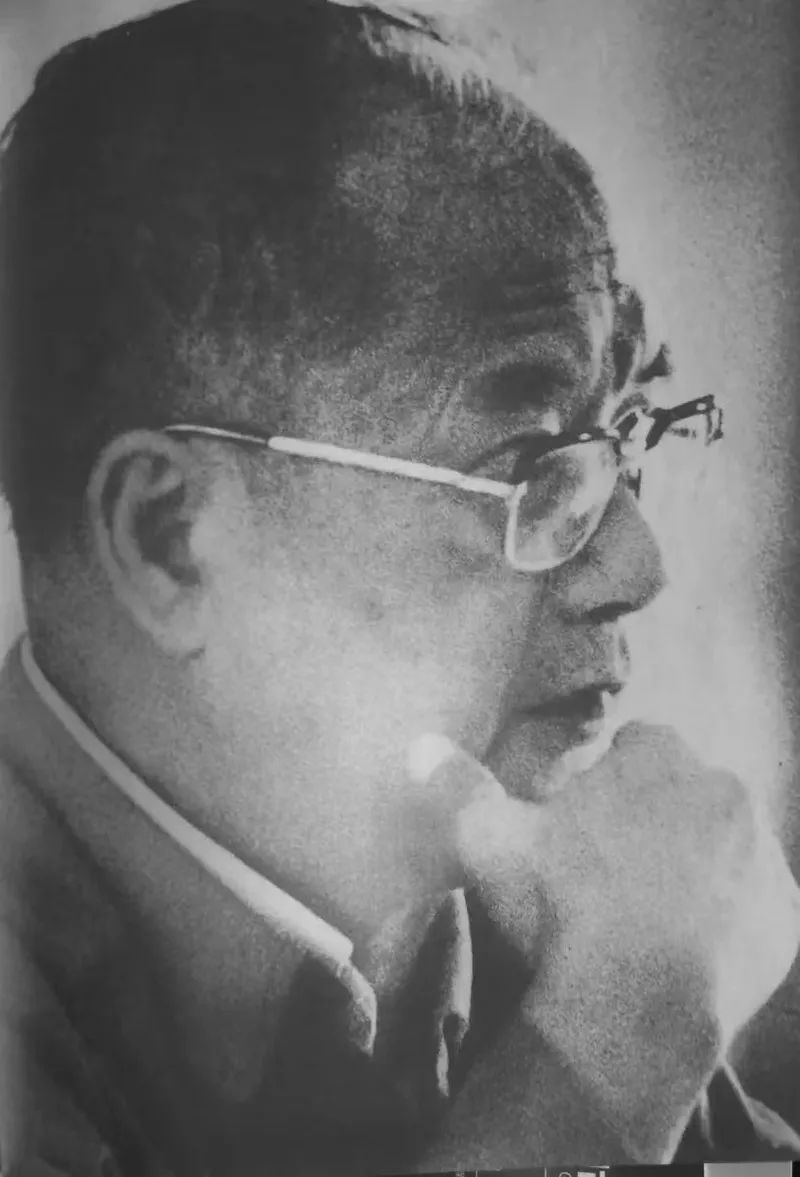
Master file
Tan Qiyi: Born in Shenyang in February 1911, the word Ji Long, Jiaxing, Zhejiang, historian and historian, the main founder and pioneer of Chinese history and geography. He graduated from the Department of History and Sociology of Jinan University in 1930, received a master's degree in the Yanjing University Research Institute in 1932, and was elected as a member of the Chinese Academy of Sciences (now the academician) in 1980. In August 1992, he died of illness in Shanghai.
Interviewer
Ge Jianxiong: Born in Huzhou in 1945, disciple of Tan Qizhen, a librarian of the Central Literature and History Museum, senior professor and doctoral supervisor of the Liberal Arts of Fudan University.
Zhou Zhenhe: Born in Xiamen in 1941, disciples of Tan Qizheng, senior professor and doctoral supervisor of the liberal arts of Fudan University.
Tan Derui: Born in Beijing in 1936, the eldest son of Tan Qiyi, a researcher at the Shanghai Museum, and President of the Chinese Traditional Craft Research Association.
First understanding: a taught, a master, a teacher of the first life
Gao Yuan: Did the graduate student who applied for Mr. Tan Qizheng in 1978 Is it for Mr. Tan to take the test?
Zhou Zhenhe: Actually, like most young people at the time, I didn't know who Tan Qizheng was. It was purely because of the restoration of the graduate school recruitment system and accidentally hit Tanmen.
I was a university in 1958. Because of the good number of physical and chemical results, I applied for science and engineering. This was the atmosphere at the time. My undergraduate is a major in Fuzhou University. To put it plainly is to dig coal, which is the hardest job. After graduating, I was assigned to Yueyang, Hunan, to be an assistant engineer, and it was 15 years. If I did not take the graduate exam in 1978, I should now be a retired senior engineer.
Gao Yuan: Anyone who studies explorators wants to study historical geography. Did Mr. Tan worry that this span is a bit big?
Zhou Zhenhe: Mr. Tan said that enrollment should be eclectic. He said that it is not not the conditions for not talking about it, but that you are seeking truth from facts and starting from reality. Pay special attention to selecting those who have creative ability.
At that time, there were dozens of people who applied for Mr. Tan in the country. Some of them graduated from history, graduated from the Department of Geography, and graduates from Fudan University History and Geography. My undergraduate undergraduate has nothing to do with historical geography. Ge Jianxiong has never been to college. After graduating from high school, he has been a middle school teacher who has been in high school for more than ten years. We all lay the foundation through self -study.
Gao Yuan: Did Mr. Tan personally presided over the graduate interview?
Zhou Zhenhe: It was a day in July 1978. At that time, he had a cerebral thrombosis in the hospital. We were interviewed in front of his bed. This was the first time I saw him.
Mr. Tan was quite satisfied with my interview results, because I pointed out that there was a problem with a comment in Wang Boxiang's "Selected History". I said that "Taihua" refers to Dahua Mountain, because there are Shaohua Mountain on the side, and I also attracted the words in the Mountains and Seas. Mr. Tan felt very strange at the time, and an engineering student could overthrow Wang Boxiang's annotation. Gao Yuan: After entering the school, how did Mr. Tan take class?
Ge Jianxiong: At that time, Mr. Tan accepted five people including Zhou Zhenhe and me. We enrolled in October that year. In addition to class, he also received our separate questioning and modified our work.
At the end of 1980, I saw a few trial entries in the "Chinese History Dictionary" in "History Teaching". Among them, "Beijing" I think the information is incomplete, so I told Mr. Tan that he encouraged me to write down, and later Our communications and supplements I made in the magazine were published. At that time, I knew that this entry was written by Mr. Tan, but he was very happy to hear my opinion. He also said that a person's knowledge was always limited, and I was moved.
Gao Yuan: Later, you were admitted to Mr. Tan's doctoral student again. What are the characteristics of his teaching method?
Ge Jianxiong: Of our 5 graduate students, 4 graduated in 1981. I served as Mr. Tan's assistant in the previous year and had left school to work. In early 1982, the first doctoral students enrolled in the first batch of doctoral students. Zhou Zhenhe was recruited by Mr. Tan as a doctoral student. One and a half years later, Zhou Zhenhe and I approved by the Ministry of Education and passed the argument in advance. In October 1983, I received a doctorate degree in history. At the ceremony, Mr. Tan was very happy.
Mr. Tan uses inspirational education for graduate students. In addition to teaching historical geography, such as "Yugong", "Hanshu · Geography" and the geography of the past, generally not to have any professional courses, but he is willing to communicate with students. He often talks about it. It's one or two hours. He always said that good students are not taught, and you have to learn by yourself. What he is most concerned about is how the students surpass themselves, so every time he hear different opinions from him, he always encourages. He said: "Of course I want to surpass Qian Daxin and Wang Guowei. You should surpass me. How can you improve your academic?"
Zhou Zhenhe: In the few years from a master's degree to a doctoral student, Mr. Tan always treated us with a discussion and taught us as a conference to improve our professional level. He does not preset the thesis title, and he chooses himself by his own interests. I later took my graduate student and never incorporated their papers into their own scientific research projects in advance, but instead allowed them to have a space for free choice. Unless they have no special ideas, they make appropriate suggestions.
Mr. Tan is a teacher of a life, not a moment of a teacher. He is my taught and my master. Some teachers only lead you to get started, and some teachers accompany your life.
The awarding ceremony of a doctoral degree, from left: Zhou Zhenhe, Tan Qizheng, Ge Jianxiong
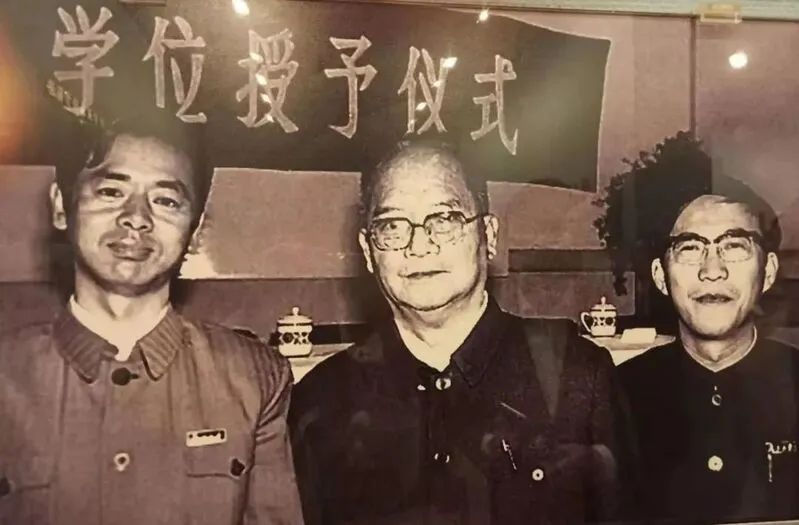
Tan Qizheng and Zhou Zhenhe
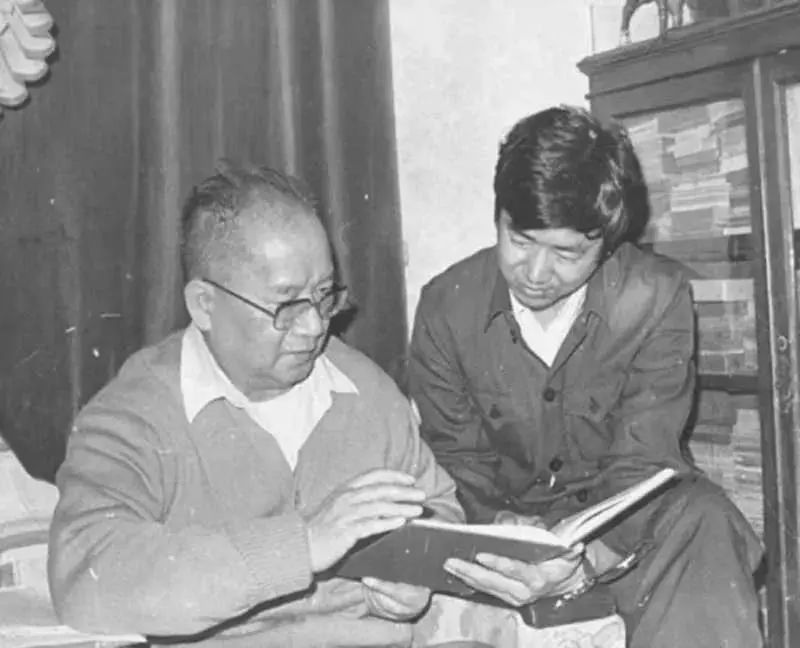
Heavy responsibility:
A dream of thousands of years
Gao Yuan: When you entered Tanmen, what extent did he advance to the editorial work of "Chinese History Atlas"?
Ge Jianxiong: The last branch of this atlas was published in 1978 in 1978, and the internal version of the internal version was full. By the beginning of 1979, Mr. Tan recovered at the beginning of his illness. The Institute of History and Geography of Fudan University was drafted on the publication report published by the "Chinese History Atlas", as well as the plan of the sequel to the Republic of China. At the end of this year, the Map Press reported to the State Administration of Surveying and Mapping, asking for publicly publishing the map set.
Gao Yuan: Where can the source of this giant system be traced back?
Ge Jianxiong: To go far, this is a millennium dream. China has a long history and vast. Since the records, tens of thousands of place names have been used. Moreover, the territory of the Central Plains dynasty often exceeded today's borders. The northern part of the Korean Peninsula was once the county and counties of the Han Dynasty. Today, the northern part of Vietnam was attributed to the Central Plains dynasty before the 10th century. The northern world of the Yuan Dynasty reached the Arctic Ocean. Until the Opium War, the west and northern bounds of the Qing Dynasty were far from Lake Barkhakha, Sayanling, Erguna River, Waixing'an Ridge and Curbus Island.
At the same time, the place name is constantly changing, and there are phenomena of the same name and different places in different periods in history. Even if the same name is the same place, it does not necessarily be the same. The county, which is famous, may have different jurisdictions in different periods. The changes in the jurisdiction of counties, states, prefectures, and provinces are higher and more frequent than the county. Even professionals cannot remember so many places, and need to consult reference books such as the Dictionary of Dictionary. But if you want to know the location and regional scope of these place names, it is necessary to use historical maps.
Gao Yuan: If you go closer, which year can you go back?
Ge Jianxiong: In the autumn of 1954, Mao Zedong attended the first National People's Congress in Huairentang, Zhongnanhai. One day he talked to Wu Yan about "Zi Zhi Tong Jian". Mao Zedong said that the writing was well written. , But the narrative is in the same way, we can read it criticized, but the old was not punctuation, regardless of paragraphs, and it was inconvenient to read today. He also talked about reading history without a historical map in order to check the position of historical place name at any time. Before the founding of New China, although some books have published several historical maps, they have been lost. Wu Yan remembered that Yang Shoujing in the late Qing Dynasty and the early Republic of China had edited the "Map of Public Public Public". The content was relatively detailed. All states and counties that were found in the geography of Zhengshi generally met the needs of Mao Zedong. However, Yang Shoujing's map was printed on the paper with the black and red colors that represent the ancient and modern content. A total of 34 volumes of the line were loaded, and the territory was divided into dozens of pieces. It was quite inconvenient to check. Furthermore, the "Today" on Yang Shoujing's map is the "Daqing Qi Tongyu Map" published by Hu Linyi in the early years of the Tongzhi of the Qing Dynasty. Come here a lot. Therefore, he suggested to Mao Zedong that while the punctuation "Zi Zhi Tong Jian" should also be transformed by Yang Shoujing's "Map of Public Publicity". Mao Zedong agreed with Wu Yan's suggestions to hand over both things to him.
Gao Yuan: At that time, it was determined that Mr. Tan was responsible for map drawing?
Ge Jianxiong: On November 2, 1954, the "Personal Personal" Zi Zhi Tong Jian "and the adaptation of the" Yang Tu "committee" was led by Wu Yan and Fan Wenlan. Start work soon. In the latter work, Wu Yan thought of Tan Qizheng. The Committee agreed to invite him to the preside over Beijing, and he instructed the Ministry of High Education to borrow from Fudan University for a year. Wu Yan also wrote a letter to Mao Zedong, and Chairman Mao replied to agree.
Chen Wangdao, the president of the Ministry of Higher Education, and the president of Fudan University, President Chen personally came to Tan Qiyu's apartment and asked him to report to Beijing after the Spring Festival. Mr. Tan was excited and suddenly felt. According to his experience, the workload of the school painting Yang Shoujing's map will be very large, not within one year.
Later, as he expected, the work of the punctuation "Zi Zhi Tong Jian" was quickly completed, and the adaptation of "Yangtu" needed a long time. ", Referred to as" Yangtu Committee ".
Gao Yuan: But later he was out of "Yang Tu" and started another stove?
Ge Jianxiong: There were two opinions at the time. One opinion is that the mountain frame of the bottom map is still based on the "Map of Yang" and "Daqing Yongqing", but the names of the late Qing government in the picture in the picture are used in the name. Mr. Tan holds another opinion. He believes that the difference between the late Qing Dynasty and the current political district is not only the difference between the construction and the name. Many are newly built after the late Qing Dynasty. There are the same name, but the governance is no longer the original place. What's more, "The Tongqing Map of the Qing Dynasty" was made by the "Map of the Inner Mansion" based on the 18th century surveyed "Inner Map". There are many mistakes. The map drawn after the founding of New China has been much higher. Why not adopt accurate new pictures?
Mr. Tan's opinion was approved by Hou Waulu, Yiyi Qun, etc., but Wu Yan supported the previous opinion. He might want to complete the task assigned by Chairman Mao as soon as possible. Of course, Mr. Tan's plan can be greatly improved, but the work will last long.
After working in Beijing for more than a year, Mr. Tan returned to Shanghai. Later, I traveled to Beijing many times in Beijing and Shanghai. I found that the errors in "Yang Tu" were more missed than the original estimated. Since I found it, we must not be corrected and supplemented. Until a meeting in early 1959, Wu Yan agreed to redesign the plan to completely abandon the old system of "Yangtu", which played a decisive role in ensuring the accuracy of this atlas.
Tan Qiyi at work (second from left)
Ge Jianxiong accompanied Tan Qizheng to visit Zhou Shangguang couple
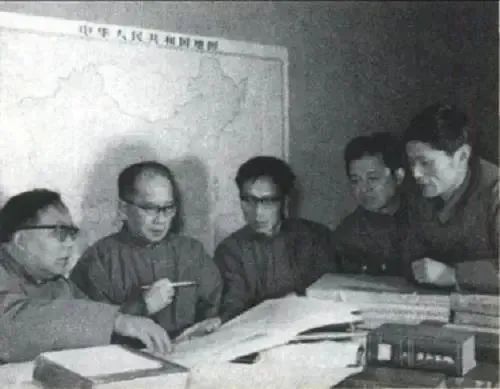
Drawing: Confidential maps for special custody

Gao Yuan: When will this set of fabrics be completed according to the subsequent schedule?
Ge Jianxiong: In July 1965, a long -lasting charting work meeting was held at the Beijing Heping Hotel. First of all, the internal review, and then the organization of the organization, the Yuanming map was completed. At the conference in mid -August, the goal of completing all the manuscripts by the end of 1967 was determined, and decided to increase the large -scale capital city map.
That night, Wu Yan seized the main personnel of the meeting at the Xinqiao Hotel. When I thought of completing this big project in two or three years, when I could present a set of historical contests to Chairman Mao, Wu Yan’s interest was very high. Frequently toasting to Mr. Tan persuaded. Although Mr. Tan understood that the rest of his work was still very large, he was also pleased to the implementation of the task, but he would not think that this was his last meeting with Wu Yan, and the "Cultural Revolution" began in the second year.
Gao Yuan: Which year is the starting work again?
Ge Jianxiong: In May 1969, Mr. Tan had just ended his labor transformation in Qingpu rural areas, and temporarily received a notice from the meeting. After a few days of criticizing the "opening", we began to discuss the examples set by the last meeting 4 years ago. The compilation work that was interrupted for many years was resumed, because the reason was simple, because this was a matter of assigned Chairman Mao.
Gao Yuan: Where is the focus of the screening after recovery?
Ge Jianxiong: In fact, before the start of the "Cultural Revolution", the first draft of most of the diagram of the atlas has been compiled or prepared for information. More importantly, after many years of groping, the editing method has been mastered. With the careful cultivation of Mr. Tan, some college students who did not know what the historical map had been able to take the same side and assumed the compilation of important maps. However, before the "Cultural Revolution", only the Ming Dynasty was drawn, and there was no painting in the Qing Dynasty because it was too closely related to the border issues that existed at that time. After restoring the compilation, the clearing not only required drawing first, but also as a focus. It was started by a family of Fudan University in the first few months, and later contacted the original collaborative unit to invite them to participate. The division of labor of each unit is basically the same as before: the Central National College is responsible for the northeast, Nanjing University is responsible for the north, the Chinese Academy of Social Sciences is responsible for the Northwest, the Institute of Modern History is responsible for Tibet, Yunnan University is responsible for Yunnan and Guangdong, and Fudan University is responsible for the sea. Fudan is not only responsible for summary, but also sent people to the compilation of the institutes of the institute, the people, and modern history.
At that time, the "Cultural Revolution" was not over, and many people had not been liberated. Once at the meeting in Shanghai, Mr. Tan saw Fang Guoyu, a professor at Yunnan University. As soon as he asked, Fang Guoyu knew nothing about it in advance. New censorship.
Gao Yuan: Has the standard of compilation work changed?
Ge Jianxiong: Shortly long after restoring the compilation, in August 1969, a unit proposed that in addition to the territory of the standard age of the Central Plains dynasty, the largest territory of the dynasty should be drawn. Under the principle, or the place where the maximum territory is supplemented on the standard age, or as illustrations are attached to the graph. For example, the Ming Dynasty Hami Eight Guards should be stated in the Ming and Shaanxi widths, and if the territory of the Hongwu dynasties in the Hongwu period of the Ming Dynasty had arrived at the Siramulan River, the territory of Hongwu Shi should be supplemented in the Beijing Division.
However, because the territory of the Central Plains dynasty generally does not appear in the same era, it often reaches extremely prosperous in one direction, but the other direction is narrowed. Therefore, in fact On the picture, it comes to put together a "great territory".
In order to enable Mingtu to show the great territory of the Ming Dynasty, some people suggested that it change its standard age to Xuande for three years, but it may not be possible to achieve the purpose, so some people proposed to cancel the standard age. In the end, the decision was decided to use Xuande for ten years, but the border must be drawn with a lot of pictures.
Gao Yuan: When did this set of icons named and published internally?
Ge Jianxiong: In April 1974, Mr. Tan went to Beijing for more than a month to discuss important issues such as the Yuanming Tibet map and the painting method of the South China Sea islands. The meeting confirmed that the atlas of the "Chinese History" named the name of "Chinese History", which was issued by the Map Publishing House. It first issued 8 books for leaders and comrades and professional departments, and then issued 16 to increase the circulation.
In November of that year, the Map Press issued a letter of "Please assist in the distribution of" Chinese History "issuance of the" Chinese Historical Map "to Xinhua Bookstore. Essence A total of 8 volumes are divided into 8 volumes, divided into 8 hardcover, 8 -opening bulk, and 16 popularity. Except for the 400 sets of hardcover and 100 sets such as the editorial units and internal samples, the rest are distributed to the national division -level units, or introduced the supply of letter supply by the local division level.
At that time, there was no book to buy, and the icon was released quickly. Professor Shi Nianhai, a professor at Shaanxi Normal University, later told Mr. Tan that he had reached a division -level unit. The person in charge said that it was confidential, so he sent a person to keep it. He asked Shi Nianhai to see what is the use of this map. At a glance, Shi Nianhai was this set of "Chinese History Atlas".
Gao Yuan: Did Mao Zedong see this atlas with his own eyes?
Ge Jianxiong: During the publication of the ground, Mr. Tan once asked whether he should send Chairman Mao, Premier Zhou, and other central leaders. The response was to send them together. But by September 1976, Mao Zedong died, and the atlas had not yet been fulfilled, and Chairman Mao failed to see the historical atlas he asked for compilation. I think that without the "Cultural Revolution", this set of fabrics should have been placed beside his bed.
Editor: Thirty Years of Famous Dust and Earth
Gao Yuan: What attitude does Mr. Tan hold on this set of icons?
Ge Jianxiong: At the beginning of 1980, Mr. Tan wrote to the central leaders, reflecting the crystallization of the "Chinese History Atlas" for 20 years of hard work, whether it is the richness of the content, or the scientific and accuracy of the preparation. It is far more than the previous historical maps of the same kind. This is an important scientific achievement in the historic community in my country. It calls for public publication as soon as possible.
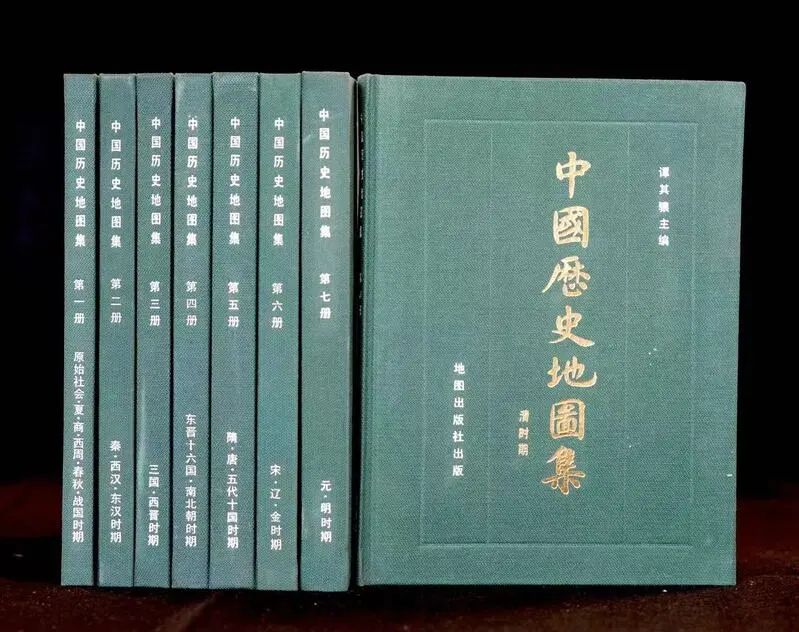
After the letter was transferred to the Central Propaganda Department, the relevant leaders instructed and agreed. Later, Mr. Tan began to consider the modification plan and found that the problem was not easy. He listed in detail where the need to modify. This is not an ordinary plan. The specific modification opinions of the total diagram and the scale diagram are actually comprehensive corrections of the error caused by the "Cultural Revolution".
Gao Yuan: The revision of the context lasted more than 8 years. Why did it last for so long?
Ge Jianxiong: Some of the reasons are constantly mentioning opinions in the revision work. Regardless of whether these opinions are correct or not, Mr. Tan and colleagues have been seriously studied. If they are reasonable, they can be reflected on the picture, and they are generally adopted in the revision. Even if it is a letter from non -professionals or ordinary readers, it has received the attention. In addition, due to sensitive issues involving Taiwan, territory, relationship with neighboring countries, and ethnic minorities, it took a long time to revise and review. Mr. Tan always insists on drawing pictures according to historical facts, and must not violate historical facts.
In August 1986, the discussion hosted by the Dean of the Chinese Academy of Social Sciences was held in Beijing. After a day and a half discussion, it was sometimes a fierce debate. It states that the research results of the scholars of the atlas do not represent the government's perspective. Although there are different opinions in the academic world, only one of them can be represented on the picture.
Gao Yuan: Published on December 1988, and the disclosure was finally out. At that time, what was Mr. Tan's mood?
Ge Jianxiong: In March 1989, the Chinese Academy of Social Sciences held a meeting to celebrate the "Chinese History Atlas". Hu Qiaomu and Hu Roller and other 70 or 80 leaders and scholars attended the meeting. I also went with Mr. Tan. He said at the meeting that when celebrating the victory, the biggest regret was that Chairman Mao and Premier Zhou, who had high hopes for this atlas, did not see the publication of the atlas published. Yes, Comrade Wu Yan, who presided over this task for 11 years, was brutally persecuted at the beginning of the "Cultural Revolution". He hurriedly left us. Coexist with atlas.
Everyone present knew that Mr. Tan made the biggest dedication to the atlas, but he did not mention himself.
Gao Yuan: Since 1955, Mr. Tan presided over the assembly of the atlas for more than 30 years. Is this editor -in -chief very worried?
Ge Jianxiong: This is a large project that needs to coordinate more than ten units across the country. From the beginning, Wu Yan repeatedly emphasized the responsibility system. He said to Mr. Tan: "The collective work does not give the editor -in -chief to ruling the power. Responsible for the content of each picture. "He emphasized at the meeting more than once:" The committee does not accept the document without Tan Qizhen's signature. All the documents must be signed by the editor -in -chief and passed the post, and the committee can deliver the publisher. "
In those years, except for meeting or activities, Mr. Tan's arrangements usually worked at school during the day. There was a lunch break at noon, working late at night to late at night, and even dawn. I checked the directory of his theory from 1955 to 1965. During this period, there were only 12 papers he published, and the four years of 1956, 1957, 1958, and 1964 were completely blank. Mr. Tan contributed the golden years of his 44 years of academic research to the "Chinese History Atlas".
Gao Yuan: What return did Mr. Tan get?
Ge Jianxiong: From the perspective of "name", there is no signature in the internal version. From the perspective of "Li", 5 years after the internal version was out, Mr. Tan received the draft fee of 7214.4 yuan twice, and the public version received 5231 yuan. The atlas won a prize of outstanding achievements in social sciences in Shanghai, with a total of 3,000 yuan, and Mr. Tan was divided into the most -220 yuan.
But history is fair. On April 8, 1980, Hu Qiaomu pointed out at a congress of the Chinese History Association: "After liberation, my country's historical community has done a lot of work. One of the most achieved work is to compile under Comrade Tan Qizhen and other comrades leaders. "Chinese History Atlas". This work has not been completed yet, but it is a very remarkable job that can help us understand the history of our country's territory. "
Governance: A watch that is not tightly twisted
Gao Yuan: Are you four siblings?
Tan Derui: Yes, I am the eldest son, my eldest sister Tan Dewei, my brother Tan Deyao, and the younger sister Tan Dehui. In our memory, his father was a hard -working person in his life, and he worked almost in the early morning. We went home in the winter and summer vacations, and sometimes slept on the sofa of the living room. I woke up in the middle of the night and often saw my dad walking around. Seeing that we woke up, he would ask him concerned and wake you up?
My father was written on the morning and day after day, and the work was written until the early morning, and even the left body was still inconsistent after the stroke. Each year, he only played the puzzle game "Puzzle Map" published by the children on New Year's Eve. The bells rang at midnight, the children fell asleep, and he continued to work in his desk.

As long as there is a little time, he is thinking about problems and research, because deep in his heart, he is always crossing thousands of years, touching the mountains and rivers of the motherland. He takes this as his responsibility and is happy for life.
Gao Yuan: Has his father told you his experience?
Tan Derui: His father once said that his experience is actually very simple. After graduating from Jinan University, he went to Beijing to study in Beijing to study the Yanjing University Research Institute, and then entered the Peiping Library as a library. In 1935, he resigned from the library and taught in the university. Peiping's Furen, Yanjing, Peking University, and Tsinghua Tsinghua all have been taught. They are all lecturers. In the spring of 1940, he entered the rear, and served as an associate professor at Zhejiang University in Guizhou at the time. At the age of 31 in 1942, he was promoted to a professor. After the victory of the War of Resistance Against Japan, he went to Hangzhou with the recovery of Zhejiang University. After the founding of New China, the college department was adjusted, and he transferred to Fudan University to teach. It can be said that I have lived in college all my life. I have learned history in college, teach history, and the oldest course is Chinese historical geography.
In the 1940s, Tan Qizheng, Li Yongfan couples and children
Gao Yuan: In your memory, what are the characteristics of your father in addition to doing knowledge?
Tan Derui: His father has encountered many things in his life, but he is open -minded, low -key, never showing up, disgusting and exaggerating. Whether it is politically, at work or life, no matter how annoyance, he can leave, concentrate on concentration, concentrate on Do your own thing. I am a bit like him, but it is far from him in wisdom and hard work.
His father once said that some people think that people who are engaged in historical geography must have a good memory, in fact, his memory is not good. But in the Han Dynasty, more than 1,500 counties, most of them can remember which county country and what geographical location, because for decades, he almost rolled a "Hanshu · Geography".
At the age of 45, I was transferred to the Shanghai Museum from the Shanghai Museum to engage in academic research. My father told two things: one is to diligently governing the studies and must not exaggerate; the other is that we cannot collect cultural relics. Over the past 41 years, I have always kept his instructions, and have achieved some achievements in scientific research, and I have confiscated a piece of cultural relics.
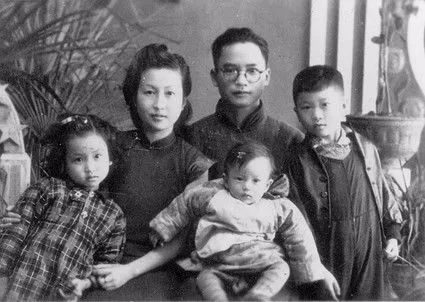
Unfortunately, none of our brothers and sisters inherited his career. I graduated from Shanghai Jiaotong University and studied for casting. After graduation, I changed from studying modern castings and studied ancient bronze and art casting. After graduating, I called to study in Shihezi Finance and Economics of Xinjiang to study in the Shanghai Zoo; the younger sister was 10 years younger than me. After graduating from elementary school, I was recruited to the Shanghai Sports School to practice throwing. During the "Cultural Revolution" Township educated youth.
Gao Yuan: What are your hobbies in your father?
Tan Derui: His father is a friend of Kunqu opera, and he likes Peking Opera, Bouncing, etc. He likes. In my childhood, my father taught at Zhejiang University in Zunyi, Guizhou. In the early 1960s, his father once went to Beijing. Wu Yan wrote the Peking opera "Hai Rui", and sent him a car to pick him up to watch the show. The starring actor was Ma Lianliang. After watching the show, Wu Yan asked my father what he felt. His father said that this is not a Peking opera, Peking Opera is a singing skills. You are a storytelling story. At that time, no one would think that the play was so implicated with politics.
Tan Derui couple in front of Tan Qi bronze statue
Gao Yuan: What is known to the outside world is that Mr. Tan had a revolutionary experience when he was young?
Ge Jianxiong: It was influenced by the trend of progress in 1926. Mr. Tan was admitted to Shanghai University founded by the Communist Party and joined the Communist Youth League. When the Shanghai worker's third armed uprising, he took a pistol on the front line. After the "April Two Incidents", Shanghai University was blocked and he was detained by the Gendarmerie of the Kuomintang and was released from bail for no evidence. He couldn't find the organization, and his brief revolutionary life was forced to draw an end.
Later, I asked him if I found the organization at the time, would I continue to participate in the revolution? He said of course. I asked him again, in the face of white horror, isn't it scared? He said that he never thought about it at that time.
Gao Yuan: He is willing to edit the emperor's masterpiece such as "Chinese History."

Ge Jianxiong: After he and the revolutionary shoulders, he turned to academics and never changed. After the publication of the "Chinese History Atlas", which had exhausted his hard work, he said that this was a unprecedented achievement in the history of Chinese historical maps, but strictly speaking, it was just a beginning, because this was just one. Ordinary atlas of the territory and political district. To truly be regarded as a complete historical conference, you should draw all the geographical phenomena that can be represented by the natural, economic, political, military, military, ethnic, and culture during the historical period. The cause of drawing Chinese historical maps can be considered a great success.
Since the end of 1982, he led the editor -in -chief of the "National History Atlas of the People's Republic of China", which is an unprecedented new topic and has encountered unprecedented new difficulties. But as always, Mr. Tan did his best for this.
Gao Yuan: Mr. Tan has many strokes in his later years. When his life is about to come to the end, what does he think of the most?
Ge Jianxiong: After the first stroke in 1978, the doctor asked him to change his work until the early morning. But he still made me, sometimes even the nanny went out in the morning to buy food, and saw that he was still working in the desk. I went to persuade him after learning. He said that he didn't want to sleep so late, but he had no force after a stroke, and he couldn't twist his watch. He often stopped the watch and didn't know. I went to buy a piece of electronic watch for him, and he never changed it again.
But in October 1991, a few days before he was unconscious, he remembered in his diary until three am every day. In late August 1992, he entered the dying stage, and I said loudly to his ears, "Sir, you can rest assured, atlas, other things, we will do it well!" Young man Tan Qizhen
Youth Tan Qiyi (middle)
Euka: The university questioner who has no monograph
Gao Yuan: In 1980, Mr. Tan was elected as a member of the Chinese Academy of Sciences and is today's academician. What did he react after he learned?
Zhou Zhenhe: At that time, I congratulated him, but he unexpectedly said that there were many people in old Zhejiang University members of the Chinese Academy of Sciences, so there were many people who knew me. The implication is that there are many people who know him, and there are more people who vote for him, which has become a member of the Ministry of Studies.
This is a deep shock. This is not a general humble word, but a scholar who really has academic confidence. At the same time, I also educate me. No matter when, in the endless academic research, I must always have a sober understanding of myself. Do not think that you are the incarnation of the truth.

Gao Yuan: As a professor of liberal arts, he became an academician of the Chinese Academy of Sciences. Is this extremely rare?
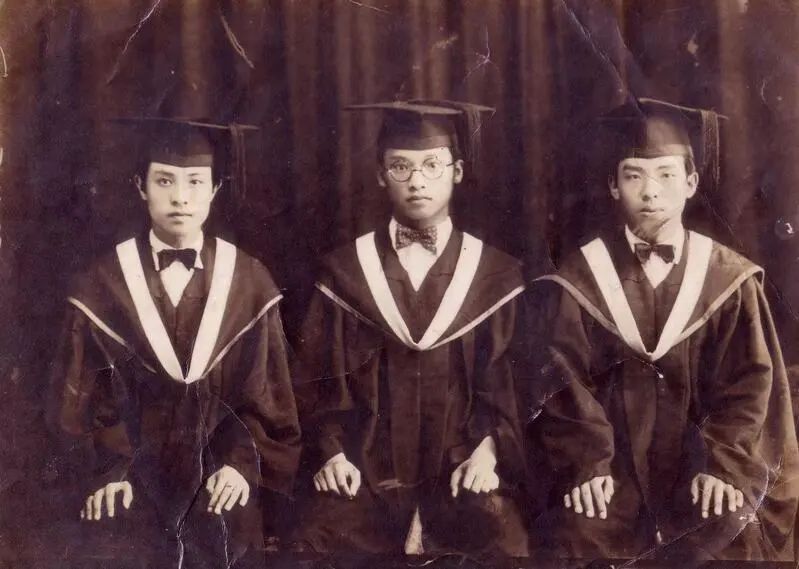
Ge Jianxiong: Indeed, this has left a brilliant stroke in the history of the development of philosophy and social sciences in New China, the history of education and the history of Fudan University.
In fact, Mr. Tan is cross -border. The first is a social scientist because he studies history. He graduated from the Department of Social History of Jinan University and studied history. He completed his graduate studies at Yanjing University. The mentor was Gu Jiegang, a master of history. Later, he taught Chinese history in many universities. He has published hundreds of papers, and many of them have become classics of Chinese history research. When the "Chinese Encyclopedia · Chinese History Volume" was published, he was one of the few historians in the world.
At the same time, he is also a natural scientist because he also studies geography. In 1934, he and his mentor Gu Jiegang initiated the establishment of the Yugong Society. This was the first academic group in my country to study historical geography as the purpose. The first course he taught in Fu Jen University was the history of China's geography. This course later developed into Chinese historical geography. He has been taught until his later years. He is also included in the "Encyclopedia of China · Geography Volume", and it is also one of the minority geographical scholars in the purpose of the entry.
Because of this, Mr. Tan joked that he was "amphibians" during his lifetime.
Gao Yuan: Some people once said that his "amphibious" has a little family origin.
Ge Jianxiong: Yes, Tan is called the Wang family of Jiaxing and Qing dynasties in Jiaxing and Qing dynasties in Zhejiang. It belongs to Shu Xiangmen, but in the Qing Dao Guang years, he had "abandoned Confucianism" and became a huge rich during business during the Tongzhi. Mr. Tan's grandfather was a man, his father was Xiucai. His father studied the railway major in Japan. After returning to China, he served as the headmaster of Shenyang Huanggutun Station.
Mr. Tan had a tendency to "amphibious" in his youth: there was old -scholarship, but he was drunk at new literature and published novels; he has read English major and transferred history. At the same time, he has a soft spot for geography. In order to recite the place name and remember the position ratio.
Gao Yuan: In 1959, Mr. Tan founded the Chinese History Geographic Research Office at Fudan University. In 1982, he was established in 1982. He was the first director. Can the discipline of Chinese historical geography be said to have laid it?
Ge Jianxiong: He is the main founder of this discipline. People often ask me, do you study history or research geography? Some people say that you are not easy to study history and geographical geography. I have to explain in the simplest words. History and geography itself is a discipline, which does not mean historical plus geography.
This is determined by the particularity of this discipline. The research target of historical geography is the geography of the historical period, and the geography itself contains two aspects of nature and humanities, involving the natural environment and human society, or cross -literary science. More precisely, Mr. Tan consciously chose such an academic mission -exploring the truth in the three -dimensional structure of time, space, and human beings.
Gao Yuan: Mr. Tan is a college asking home, but he has not written much in his life. If he does not put a lot of time on the reign atlas, will he leave more works?
Zhou Zhenhe: Except for the "Chinese History Atlas", Mr. Tan has only two papers, "Long Water Collection" and its sequel, and even no monograph. If the editor -in -chief atlas is not edited, his personal academic results will certainly be richer, but according to I want to come, there may not be many monographs. Because his philosophy is different from others, the problems that can be explained by the article are published without monograph.
When he is the editor -in -chief of "History Geography", he often writes such comments on the reviewed manuscripts: "This is a question that can be made clear in one or two sentences, why should I write such a large paragraph?" In the territory of the territory, he did not leave a manuscript, which made his future generations sigh. Fortunately, one year before his death, he finally wrote more than 40,000 words of "Concise Chinese History Atlas", and then made up for this regret slightly.
Mr. Tan really dedicated his life to a collective career. In fact, in addition to historical geography, he still has many insights to publish, such as in the history of national history. Therefore, I always think that people who really have learned are left with a stomach, instead of pouring the ink and relying on the emptiness.
Gao Yuan, the newly published "Tan Qiyi History Geography" recently published by the Chinese Book Company: What is the biggest impact of Mr. Tan on you?
Zhou Zhenhe: It should be said that it is a spirit of learning.I have to do what others can't do.The matter is the most important thing, just because it is true or false, virtual or real, whether it is secondary.
Some people often ask, what's the use of doing this?I said that learning things whether it is useful.Some people also help us talk, saying useless usefulness.I do n’t fully agree with this view. Learning is not useful, not to say that we do it because of “useless use”.The key to learning is that we have to solve it, and to figure out the right and wrong. This is the most important thing.
Liberation Daily · Shangguan News Original manuscript, reprinting without permission
Author: Gao Yuan
WeChat editor: Antong

School counterpart: Jia Simin
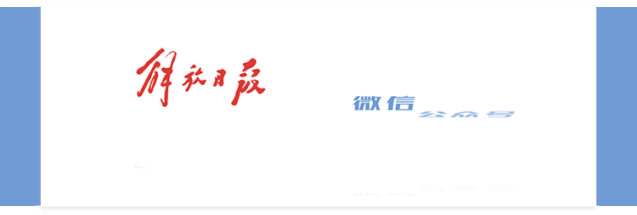
- END -
Selected poetry | Return to the half -rain of Yan, now Yulu 醮 red yarn
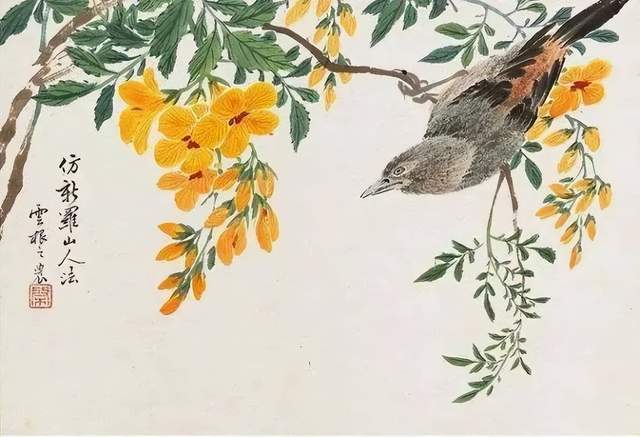
Summer LeisureWen / Spring and AutumnThe fruits bottle cup has been zero, and the ...
Guanwen pulse | Zhongying Street: Witness of the fusion of Shenzhen and Hong Kong

If you don't indicate, you may not see it, this is the famous Zhongying Street.The...